This week I, Frankenstein becomes available on DVD. Here is an exclusive fxInsider look at the latest version of the cinema classic Frankenstein, from a non-traditional point of view.
Director Stuart Beattie’s I, Frankenstein tells the story of Adam (Aaron Eckhart), the creature made and abandoned by Dr. Frankenstein, in the middle of a war between gargoyles and demons. During filming in Melbourne, fxguide was able to visit the I, Frankenstein set to talk to the members of the visual effects, special effects, stunts and make-up effects crews. We look at some of the insights from that visit, and also explore how a selection of final VFX shots were crafted for the film.
Visual effects supervisor: James McQuaide
VFX supe James McQuaide oversaw fight sequences, flying creatures, transformations and numerous other effects in I, Frankenstein, a complex task that involved translating Stuart Beattie’s script into imagery. Interestingly, early on in the shooting schedule the visual effects supervisor was not able to be on set since he was concentrating on creating useful previs for that purpose. “I’m trying to stay one week ahead of the movie,” McQuaide told fxguide. “We’ve got boards but boards, for me, lie quite a bit. When you get the thing moving you realize you need all these other shots. I have a great previs team who are mostly from the gaming world – we’ve previs’d 25 minutes of the movie in three months.”
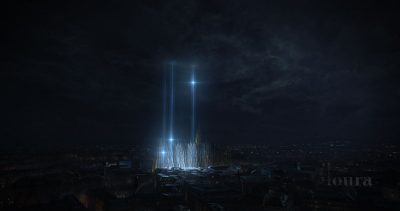
At this early stage in the film’s production, though, McQuaide said there was still much to work out. For example, creatures like the gargoyles (which would be mostly CG) were still to be fleshed out. “Previs is only really a pencil sketch about what you’re going to do,” notes McQuaide. “They’re 7 and a half foot with skin that looks like stone and wings that look like stone. We’ll have to see how that plays out.”
A central location in the film is the gargoyle’s cathedral, a massive Gothic structure that would appear, for the most part, as a digital environment. During previs, McQuaide made significant use of the film’s art department concepts. “It’s the first time I’ve worked with an art department,” he says, “that knew that even though we weren’t going to find or build a real cathedral it was a huge deal to design it and they hired someone to model it. They took the designs, modeled it and passed it to us for use in previs. I’ve been in situations where in post you have to design an environment but the art department is literally gone!”
Make-up effects: Make-up Effects Group (MEG FX)
fxguide has been covering the artistry of MEG FX for some time, and even worked with the crew on the short films I Love Sarah Jane and Bear. For I, Frankenstein, MEG FX supervisors Paul Katte and Nick Nicolaou oversaw the delivery of demon make-up appliances, Adam scars, a ‘Frankenstein’d’ rat and other prosthetics. We caught up with Nicolaou in the team’s trailer where he showed us the plethora of work done on the film.
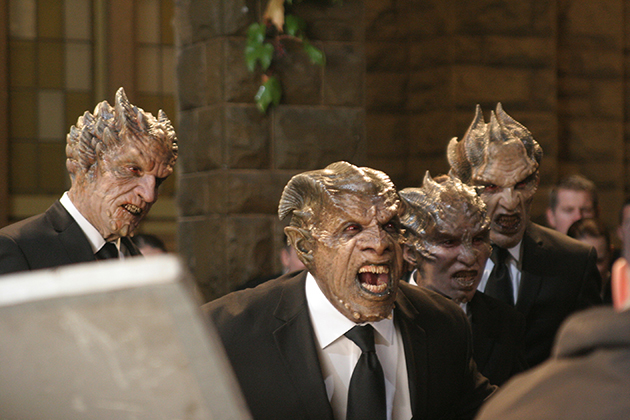
The demon make-up effects began as concept art that was fleshed out by a digital artist into 3D ZBrush creations for the director to sign-off on. “Once we did the sculptures,” says Nicolaou, “we had to wait for the key actors or stunt performers to be cast. Then we’d get them in – this part of the technology hasn’t really changed for 50 years – you still do a face or head cast of your actor using alginate material, fiberglass and plasters to replicate their face or their body. Then you do a traditional clay or plasticine sculpture on those forms to get your designs into a three-dimensional form. Then the next part is to break down the sculpture into the various prosthetic pieces and make plaster or fiberglass molds.”
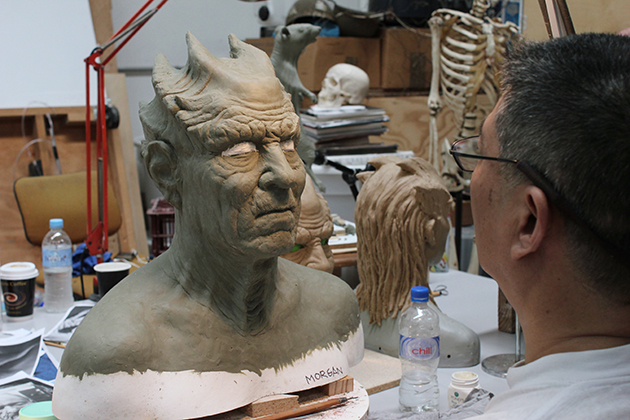
Nicolaou notes that the final appliances made use of both the durable foam latex and more sensitive silicone, with the latter offering more of a flesh-like and translucent appearance. “The back of the heads of the demons and their horns were made out of traditional foam latex material which we knew we could use a couple of times because it doesn’t break down once it’s removed. But silicone has to be thrown away so we made about 120 faces from this material.”
Watch some of the make-up effects being worked on.“With foam latex,” adds Nicolaou, “you mix the products in a mixer, it foams up into a cream and you inject it into a fiberglass or plaster mold and you put that mold in the oven and it cures the foam and comes out as rubber appliance. With a silicone product, you hand-mix them, you pour them into a mold and they set at room temperature in a couple of hours. You can churn these out a lot quicker.” The appliances were applied to performers as separate pieces, making them easier to glue down and not appear as ‘masks’. The pieces are painted with acrylic and illustrations paints, with additional air-brushing and hand-painting too.
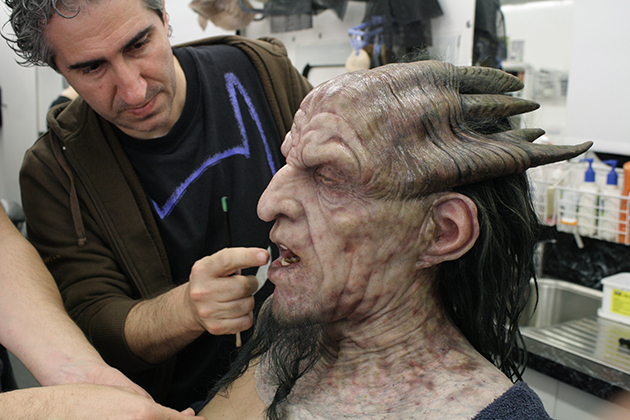
For one of the film’s main characters – a demon named Naberius (Bill Nighy) – MEG FX worked to ensure that the actor’s human aspects remained in the final look. Also, as the leader of the demons, Naberius’ horn structure was designed to be the most intricate. “Part of that character design,” says Nicolaou, “was that as they got higher in the ranks all the way up to Naberius, the horn structures got more elaborate and you knew he was the prince of darkness.”
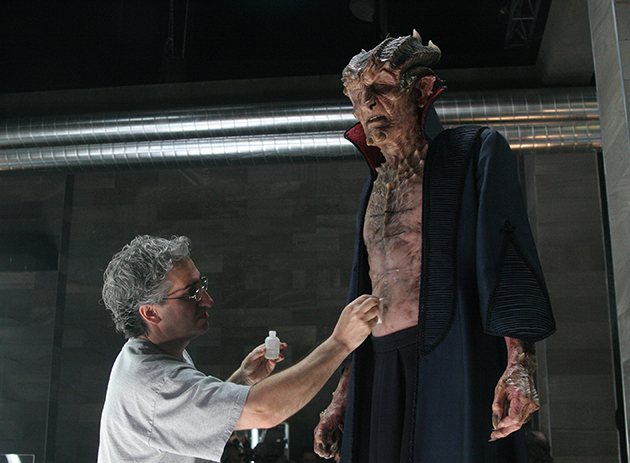
Another of MEG FX’s contributions to the film was an animatronic rat suspended in a re-animation machine. “They’re experimenting on the rat to investigate Frankenstein’s secrets,” explains Nicolaou. “It has the scars and stitches like Frankenstein. We did this as a traditional plasticine sculpture, molded in a silicone body and with animatronics. I was trying to get some bolts put in his neck and not your traditional 1940s Frankenstein bolts but they are electrodes instead.”
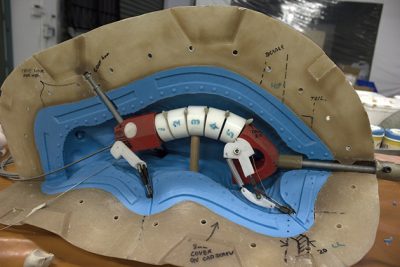
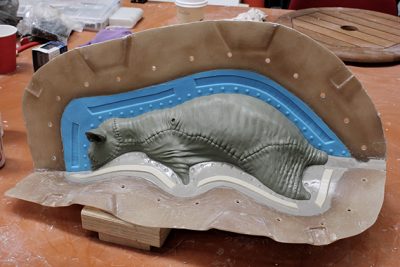
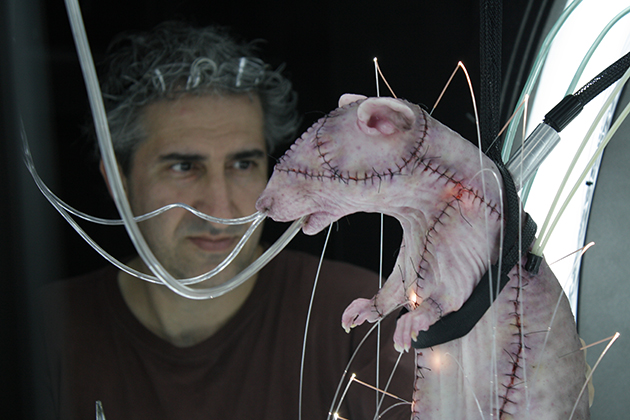
Assistant visual effects supervisor: Kev Cahill
When we met up with assistant VFX supervisor Kev Cahill during a night shoot, he had been supervising second unit plates for a sequence set in the courtyard of the demon’s lair. These plates were filmed at Ormond College, a residential college of the University of Melbourne built in the late 1800s. The scene involved Aaron Eckhart’s character landing on the courtyard and continuing to fight the demons, which was filmed with a stuntman descending on a wire rig attached to an enormous truss configuration held above the college. Previs designed by McQuaide was used directly to guide the shoot.
Watch some behind the scenes footage from on-set.As an assistant visual effects supervisor, one of Cahill’s key roles was to survey the sets. For this he undertook LIDAR scans with a Faro Focus3D laser scanner, as well as 360 panorama photography using a Roundshot set-up that was later able to be lined up the LIDAR point cloud. “The Roundshot is a little machine that you can program to connect to your camera and take photos in any order you want,” says Cahill. “We order a 360 HDRI. At each position it takes seven photos and going from dark to bright, and then it’s all moving on the nodal head and you end up with 56 photos and we stitch that together to make a 360 of the set and we get all the lighting reference from that.”
Stunt co-ordinator: Chris Anderson
We asked stunt co-ordinator Chris Anderson about how he guides his stunt team, especially in relation to the Adam / demon fight we’d seen being filmed. “I basically run my show by the previs now,” he said. “If there’s a fight we also run some of our own previs and quite a lot of the previs has our stunt rehearsal already slotted in it, so it’s very collaborative.”
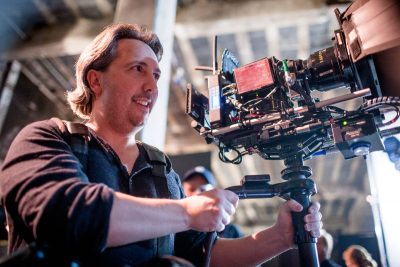
Stunt rehearsals had been taking place over the previous 11 weeks before filming in a stunt rehearsal area – a stunt dojo. “This is where we’ve developed all the stunts and flying rigs and types of movements,” says Anderson. “For example, last night we had 25 guys out fighting and they all learned to fight in the dojo and we just moved it all out there.”
Special effects supervisor: Angelo Sahin
Also working closely with the stunt team on the film was special effects supervisor Angelo Sahin, especially on major fight sequences between demons, gargoyles and Adam. One effect his SFX group were responsible for was ‘break-aways’ when characters are flung through walls. Here they would either utilize life size blue or green painted stuffies or stunt performers to crash through a specially built wall section.
“We’d get the generic brick that was approved,” says Sahin, “and then we would build a wall like you would a domestic wall. We make a break-away mortar and then the bricks go on top of each other. The bricks have different densities – it’s not just foam – it crumbles and squashes so the stunt performer or stuffie can go through it and they can put their tracking markers on the stuffie say and then the visual effects guys work on that.”
Final VFX shots
I, Frankenstein’s visual effects shots were created by several studios – here we look at just the work of Iloura and Cutting Edge in creating creatures and environments.
Iloura
Iloura’s VFX involved primarily detailed cathedral and city environments and hordes of gargoyles and demons. For the gargoyles, in particular, the studio had to solve the mix between human and quadruped-design, coupled with stone-looking wings. “They’re not literally made of stone but it’s a camouflage effect,” explains Iloura visual effects supervisor Avi Goodman. “The brief for the wings was not feathers but evocative of a Gothic statue. They’re much more rigid.”
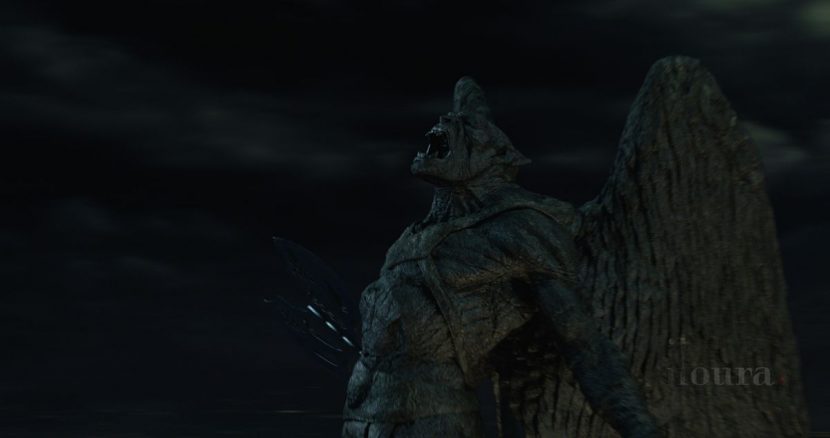
Lead modeler Samuel Jensen used original ZBrush sculpts of the gargoyles and retopologized them in Max before further modeling and rigging was done in Maya. “We had scans of some of the actors too,” says Jensen, “including Miranda Otto’s character Leonore who had to be a monster, but it was interesting because we still had to make her look pleasing and feminine and not too monstrous.”
A mocap shoot done at the Deakin Motion Lab helped Iloura with actions for both the gargoyles and demons. This fed into a crowd system used by Iloura called Miarmy, but much of the action was also done with keyframe.
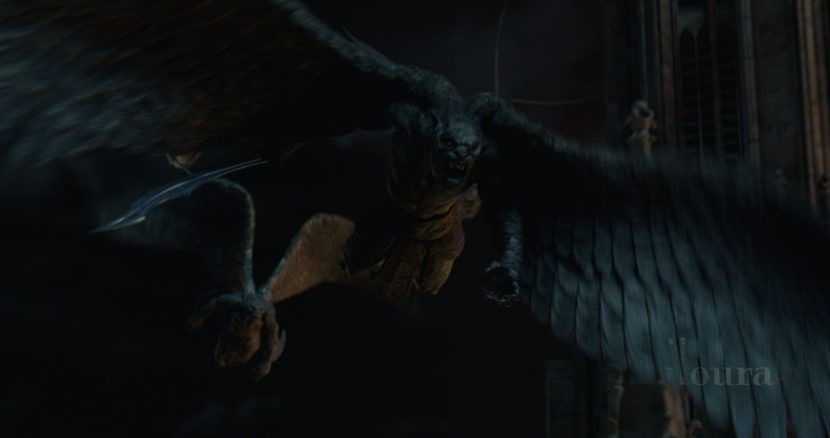
The cathedral and city environments were built with reference from places such as Budapest and Prague to make a ‘hybrid gothic city’. “The cathedral itself was hundreds of millions of polygons because the Gothic architecture had so much detail,” explains lead lighting TD Josh Simmonds. “We used a lot of instancing and V-Ray proxies. We could have those very lightweight in our Maya scenes and then defer all the loading until render time.”
Above: watch Iloura’s vfx montage reel for I, Frankenstein.
Cutting Edge
Cutting Edge was the facility that led the visual effects design for the ‘demon descension’ effect, where a demon’s spirit is violently released when mortally wounded. The look was then shared with other facilities to complete their shots.
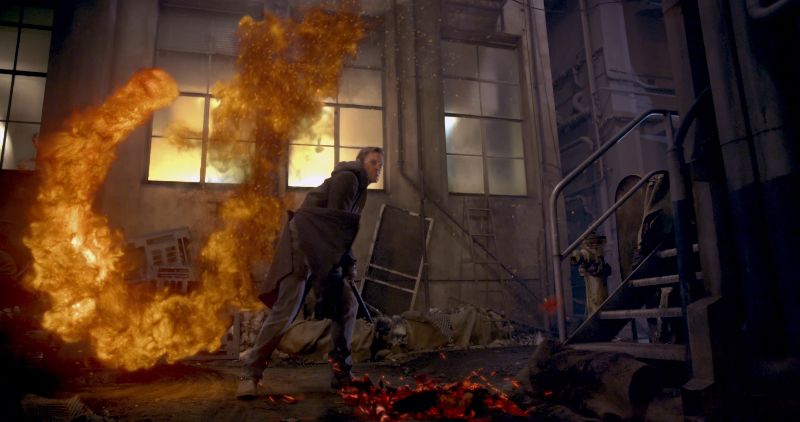
“The effect represents a spirit, it’s not just an explosion, and it’s not a haunted house ghost,” Cutting Edge visual effects supervisor Rangi Sutton said in a press release. “We wanted the demons to appear like they aren’t in full control but are still sentient.”
“Our spirits started off quite small, sprites almost,” adds Sutton. Scaling those up left it looking too supernatural for this film; we suggested blue wispiness for a short while, then there was a subsequent generation where the effect was green. We were steering clear of the flame palette and dynamic for a long time, not wanting it to appear like the sets should burn to the ground at the end of each sequence. In the end, we were all happy to walk the line between ‘natural fire’ and ‘spirit stuff’. These guys are demons after all!”
The final effect was crafted in Houdini with Mantra for rendering, and using Maya, ZBrush and 3dcoat for modeling, with compositing done in NUKE. Find out more about how Cutting Edge delivered their shots in this making of.

[…] From the set of I, Frankenstein […]
[…] From the set of I, FrankensteinREAD ORIGINAL SOURCE ARTICLE HERE: http://www.fxguide.com/featured/from-the-set-of-i-frankenstein/ […]